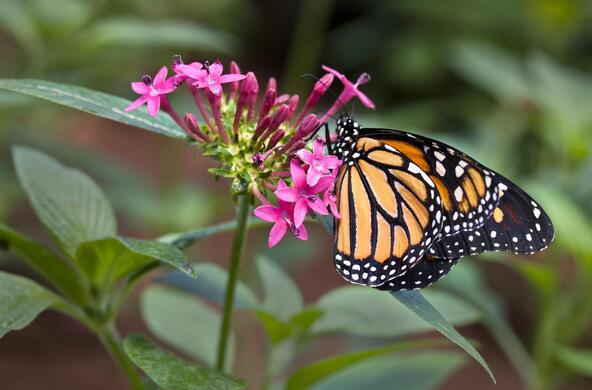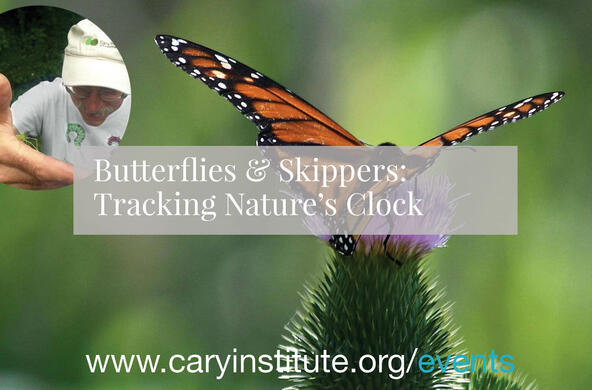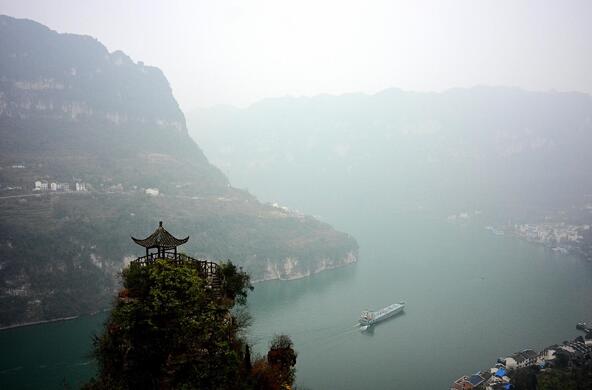More than a million wildebeests migrate each year in East Africa, moving from Tanzania to Kenya and back again. These antelopes, also known as gnus (NEUZ), follow the rains and abundant grass that will later spring up. Their path takes these animals across the Mara River. Some of its crossings are so dangerous that hundreds or thousands of wildebeests drown as they try to reach the other side. But those lost lives also provide a brief, free buffet for crocodiles and vultures. And, a new study finds, those carcasses also nourish an aquatic ecosystem for years to follow.
The Mara flows for more than 13,000 kilometers (8,000 miles) through Tanzania and Kenya. Many of Africa's iconic animals — such as lions, zebras and elephants — roam the region. Some of the lands, here, have been set aside as protected areas. People live and farm elsewhere.
Amanda Subalusky is an ecologist. She works at the Cary Institute of Ecosystem Studies in Millbrook, N.Y. Several years ago, she had been studying water quality in the Mara River. That's when she and her colleagues noticed something odd. Commonly used indicators of water quality include levels of dissolved oxygen. Yet such indicators sometimes were poorest at sites within a protected area. They quickly realized that it was because of the animals that flourished there. Hippos, which eat grass at night and defecate in the water during the day, were one contributor. Dead wildebeests were another.
"Wildebeest are especially good at following the rains. And they're willing to cross barriers to follow it," says Subalusky.
These animals tend to cross at the same spots year after year. Some of those spots are more dangerous than others. "Once they've started using a site, they continue, even if it's bad," she notes. The result: Each year, on average, more than 6,000 wildebeests drown. (That may sound like a lot, but it's only about 0.5 percent of the herd.) Annually those carcasses add mass into the river equivalent to the bodies of 10 blue whales. Those are the biggest animals on the planet.
Tracing the effects of dead animals
Subalusky and her colleagues set out to see how all that meat and bone affected the river ecosystem. When they heard about drownings, they would head off to count the carcasses. They retrieved dead wildebeests to test what happened to their various body parts over time. And they measured nutrients up and downstream from river crossings to see what the wildebeest carcasses added to the water.
"There are some interesting challenges working in this system," Subalusky says. For instance, in one experiment, her team put pieces of wildebeest carcass into mesh bags and placed them in the river. The plan was to retrieve the bags over time to see how quickly the pieces decomposed. "We came back the next day to collect our first set of samples," she recalls. And surprise! "At least half the bags with wildebeest meat were just gone. Crocodiles and Nile monitors had plucked them off the chain."
Eventually, the researchers learned that the wildebeests' soft tissue breaks down in about two to 10 weeks. This provides a pulse of nutrients — carbon, nitrogen and phosphorus — to the aquatic food web. It also provides nutrients to the nearby terrestrial system.
A succession of scavengers will feast on the wildebeests. They include crocodiles, vultures, marabou storks, egg-laying bugs and things that eat the bugs that hatch.
Subalusky and her colleagues are still figuring out the sequence in which those critters devour the soft tissue. But they have discovered some interesting bits already. For instance, vultures prefer to tear into the wildebeest through the anus. (Yes, you read that right.) That's because the animal's hide is tough, especially if it's been baking in the sun for a couple of days.
Once the soft tissue is gone, the bones remain. Sometimes the bones pile up in bends in the river or other spots downstream. "They take years to decompose," Subalusky says. Over that time, they slowly leach out most of the phosphorus that had been in the animal. The bones also can become covered in a biofilm of algae, fungi and bacteria that provides food for fish.
What initially looks like a short-lived event actually provides resources for seven years or more. That's what Subalusky and her colleagues reported June 19 in the Proceedings of the National Academy of Sciences.
Such migrations becoming more rare
The wildebeest migration is the largest terrestrial migration on the planet. Others have largely disappeared as people have killed off animals or cut off their migration routes.
Only a few hundred years ago, for instance, millions of bison roamed the American West. There are accounts in which thousands of bison drowned in rivers, similar to what happens with wildebeests. Those rivers may have fundamentally changed after bison were nearly wiped out, Subalusky and her colleagues argue.
But there still are places where scientists sometimes may be able to study effects of mass drownings on rivers. A large herd of caribou reportedly drowned in Canada in the 1980s. And there are still some huge migrations of their European kin, the reindeer. Like the wildebeests, these animals might be feeding an underwater food web that no one has ever considered.
Power Words
algae Single-celled organisms, once considered plants (they aren’t). As aquatic organisms, they grow in water. Like green plants, they depend on sunlight to make their food.
anus The opening at the end of an animal's digestive system through which solid waste leaves the body.
aquatic An adjective that refers to water.
average (in science) A term for the arithmetic mean, which is the sum of a group of numbers that is then divided by the size of the group.
bacteria (singular: bacterium) Single-celled organisms. These dwell nearly everywhere on Earth, from the bottom of the sea to inside other living organisms (such as plants and animals).
biofilm A gooey community of different types of microbes that essentially glues itself to some solid surface. Living in a biofilm is one way microbes protect themselves from stressful agents (such as poisons) in their environment.
blue whale A species of baleen whale (Balaenoptera musculus) that is the largest animal ever known to have existed. They can grow to lengths of 30 meters (almost 100 feet) and weigh up to 170 metric tons.
bug The slang term for an insect. Sometimes it’s even used to refer to a germ.
carbon The chemical element having the atomic number 6. It is the physical basis of all life on Earth.
caribou Antler-wielding North American deer belonging to the species Rangifer tarandus. They are the same species as the European reindeer, although the two groups show enough subtle differences to be considered subspecies. Caribou tend to be a bit bigger and their fur is not as thick or dense as a reindeer’s.
carcass The body of a dead animal.
colleague Someone who works with another; a co-worker or team member.
defecate To discharge waste from the body.
downstream Further on in the direction in which a stream is flowing or the path at which stream water will flow in its trek to towards the oceans.
ecology A branch of biology that deals with the relations of organisms to one another and to their physical surroundings. A scientist who works in this field is called an ecologist.
ecosystem A group of interacting living organisms — including microorganisms, plants and animals — and their physical environment within a particular climate. Examples include tropical reefs, rainforests, alpine meadows and polar tundra.
food web (also known as a food chain) The network of relationships among organisms sharing an ecosystem. Member organisms depend on others within this network as a source of food.
leach (in geology and chemistry) The process by which water (often in the form of rain) removes soluble minerals or other chemicals from a solid, such as rock, sand, soil, bones, trash or ash.
mass A number that shows how much an object resists speeding up and slowing down — basically a measure of how much matter that object is made from.
migrate To move long distances (often across many countries) in search of a new home. (in biology) To travel from one place to another at regular times of the year to find food or more hospitable conditions (such as better weather). Species that migrate each year are referred to as being migratory.
migration (v. migrate) Movement from one region or habitat to another, especially regularly (and according to the seasons) or to cope with some driving force (such as climate or war). An individual that makes this move is known as a migrant.
monitor lizards A type of muscular, predatory reptiles with scaled bodies, forked-tongues and a good sense of smell. Some are good swimmers, such as the water monitor, which tend to grow to about 1.5 meters (5 feet) long. The biggest monitor, the venomous Komodo dragon, can reach lengths of 3 meters, weigh in at more than 200 pounds, sprint at speeds of 20 kilometers (13 miles) per hour, and eat up to 80 percent of its body weight at a single sitting. At the other end of the spectrum is the Dampier Peninsula monitor, the smallest of these reptiles, which as an adult will span just 23 centimeters (9 inches) and weigh a mere 16 grams (0.6 ounce).
nitrogen A colorless, odorless and nonreactive gaseous element that forms about 78 percent of Earth's atmosphere.
nutrient A vitamin, mineral, fat, carbohydrate or protein that a plant, animal or other organism requires as part of its food in order to survive.
oxygen A gas that makes up about 21 percent of Earth's atmosphere. All animals and many microorganisms need oxygen to fuel their growth (and metabolism).
phosphorus A highly reactive, nonmetallic element occurring naturally in phosphates. Its scientific symbol is P. It is an important part of many chemicals and structures that are found in cells, such as membranes, and DNA.
planet A celestial object that orbits a star, is big enough for gravity to have squashed it into a roundish ball and has cleared other objects out of the way in its orbital neighborhood.
Proceedings of the National Academy of Sciences A prestigious journal publishing original scientific research, begun in 1914. The journal's content spans the biological, physical, and social sciences. Each of the more than 3,000 papers it publishes each year, now, are not only peer reviewed but also approved by a member of the U.S. National Academy of Sciences.
scavenger A creature that feeds on dead or dying organic matter in its environment. Scavengers include vultures, raccoons, dung beetles and some types of flies.
terrestrial Having to do with planet Earth, especially its land. Terra is Latin for Earth.
tissue Made of cells, any of the distinct types of materials that make up animals, plants or fungi. Cells within a tissue work as a unit to perform a particular function in living organisms. Different organs of the human body, for instance, often are made from many different types of tissues.
whale A common, but fairly imprecise, term for a class of large mammals that lives in the ocean. This group includes dolphins and porpoises.
wildebeest A type of antelope found in Africa. These animals are about 1.5 meters (5 feet) tall, travel in herds, eat grass and are commonly found in Serengeti National Park in Tanzania, as well as on the Masai Mara Game Reserve in Kenya and Liuwa Plain National Park in Zambia.





